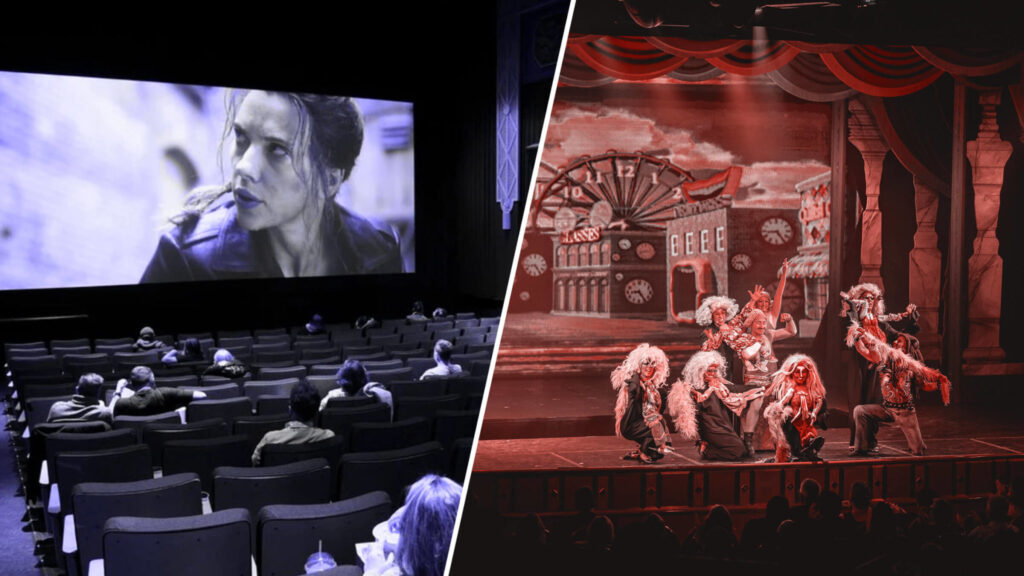What is True About Both the Stage and Film Version of a Drama?
Introduction
When a dramatic work is adapted from stage to screen or vice versa, there are certain elements that remain true to the original story, regardless of the medium. While the acting techniques and production methods may differ significantly between theater and film, the core themes, characters, and narrative structure often remain intact. This article will explore the common threads that bind stage and film versions of a drama, highlighting the aspects that make the story universal and timeless.
Shared Elements Between Stage and Film Dramas
1. Storytelling
At its core, a drama is a story that explores the human condition, delving into themes such as love, loss, conflict, and redemption. Whether presented on stage or screen, the story remains the same, with the playwright’s vision serving as the foundation for both versions. The characters, their motivations, and the events that shape their journeys are the essence of the drama, transcending the boundaries of the medium.
2. Character Development
The characters in a drama are the driving force behind the story, and their development is crucial to the success of both stage and film adaptations. The actors may interpret the roles differently, but the core essence of each character remains the same. The audience’s connection to the characters and their struggles is what makes the drama resonate, regardless of whether they are watching a live performance or a cinematic adaptation.
3. Dialogue
The dialogue in a drama is the primary means of conveying the characters’ thoughts, emotions, and relationships. The words written by the playwright are the foundation upon which both stage and film versions are built. While the delivery of the lines may differ between the two mediums, the meaning and impact of the dialogue remain constant.
4. Themes
Dramas often explore universal themes that transcend time and culture. Whether it’s the timeless struggle between good and evil, the complexities of human relationships, or the search for meaning in life, these themes are the heart of the drama. Both stage and film versions of a drama must capture these themes effectively to engage the audience and leave a lasting impact.
5. Emotional Impact
The ultimate goal of a drama is to evoke an emotional response from the audience. Whether it’s laughter, tears, or a deeper understanding of the human experience, the drama must connect with the audience on an emotional level. Both stage and film versions of a drama must strive to create this emotional connection, using their respective strengths to achieve the desired effect.
Differences Between Stage and Film Dramas
While there are many similarities between stage and film versions of a drama, there are also significant differences in the way the story is presented:
- Performance Size: Stage actors must project their voices and exaggerate their movements to reach the audience in the back rows, while film actors can use more subtle and natural expressions due to the close-up nature of the camera.
- Audience Perspective: In a theater, the audience views the action from a distance, while in a film, the audience is immersed in the story, with the camera providing a more intimate perspective.
- Production Process: Stage productions are live events that happen in real-time, while films are shot out of sequence and can be edited to create the desired effect.
- Repetition: Stage actors must deliver the same performance night after night, while film actors can refine their performance through multiple takes.
The Enduring Appeal of Dramatic Works
Dramas have captivated audiences for centuries, with stories that continue to resonate across generations and cultures. The ability of a dramatic work to translate successfully to both stage and film adaptations is a testament to the power of storytelling and the universality of the human experience.As technology advances and new mediums emerge, the core elements of drama remain constant. Whether experienced through a live performance or a cinematic adaptation, a well-crafted drama has the power to transport the audience, challenge their perceptions, and leave a lasting impression.
FAQ Section
Q: What are the core elements that remain true in both stage and film versions of a drama?
A: The core elements that remain true in both stage and film versions of a drama include the storytelling, character development, dialogue, themes, and emotional impact.
Q: How do stage and film versions of a drama differ in terms of performance size?
A: Stage actors must project their voices and exaggerate their movements to reach the audience in the back rows, while film actors can use more subtle and natural expressions due to the close-up nature of the camera.
Q: What is the difference in audience perspective between stage and film dramas?
A: In a theater, the audience views the action from a distance, while in a film, the audience is immersed in the story, with the camera providing a more intimate perspective.
Q: How does the production process differ between stage and film dramas?
A: Stage productions are live events that happen in real-time, while films are shot out of sequence and can be edited to create the desired effect.
Q: What is the difference in repetition between stage and film dramas?
A: Stage actors must deliver the same performance night after night, while film actors can refine their performance through multiple takes.
Q: Why do dramas continue to captivate audiences across different mediums?
A: Dramas continue to captivate audiences because they explore universal themes and the human experience, which transcend time and culture.
Q: How have advancements in technology affected the presentation of dramas?
A: While advancements in technology have introduced new mediums for presenting dramas, the core elements of the art form remain constant, as evidenced by the successful adaptation of dramatic works across different platforms.
Conclusion
Dramas are a timeless art form that have the power to transcend the boundaries of medium and culture. Whether presented on stage or screen, the core elements of storytelling, character development, dialogue, themes, and emotional impact remain true to the original vision of the playwright. While the acting techniques and production methods may differ between theater and film, the enduring appeal of dramatic works lies in their ability to connect with the audience on a deep, emotional level.As technology continues to evolve, the art of drama will undoubtedly adapt and change, but the essence of the craft will remain the same. The ability of a dramatic work to resonate with audiences across generations is a testament to the power of storytelling and the universality of the human experience.For more information on the history and evolution of dramatic works, you can refer to the Wikipedia page on Drama.
| Element | Stage Drama | Film Drama |
|---|---|---|
| Performance Size | Exaggerated movements and projection | Subtle, natural expressions |
| Audience Perspective | Distant view of the action | Immersive, intimate perspective |
| Production Process | Live event happening in real-time | Shot out of sequence, can be edited |
| Repetition | Same performance delivered night after night | Multiple takes to refine performance |
| Emotional Impact | Connects with the audience through live performance | Connects with the audience through cinematic techniques |
By understanding the shared elements and differences between stage and film versions of a drama, audiences and artists alike can appreciate the enduring power of this timeless art form.



